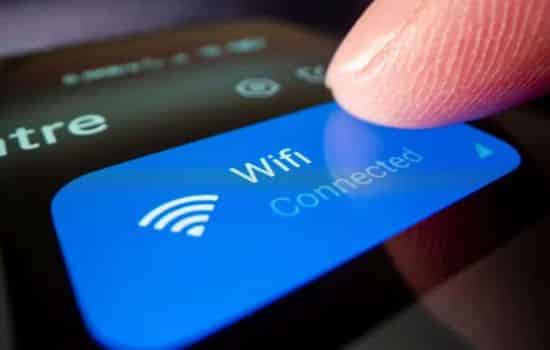Have you ever noticed that your Wi-Fi signal isn't reaching all areas of your home? 😩 Signal dead zones are a common problem, especially in large homes or those with thick walls.
WiFi Router Manager: Scan WiFi
★ 4.0Information on size, installation and warranty may vary as updates are made in official stores.
Don't worry! Today we'll show you how to set up a Wi-Fi signal repeater to improve coverage and ensure every corner of your home is well connected. 📶
A Wi-Fi repeater is a great way to extend your router's signal to weak areas. Below, we'll explain everything you need to know to set up your repeater and improve your connection. 😎
What is a Wi-Fi Repeater?
Before we dive into setup, it's important to understand what a Wi-Fi repeater is. A Wi-Fi repeater It's a device that receives the signal from your router, amplifies it, and then retransmits it to other areas of your home where the signal is weak or nonexistent. 🤔 Its function is to extend the signal's range without the need for additional cables or expensive equipment. It's an affordable and effective solution for improving your network coverage.
Steps to Configure Your Wi-Fi Repeater
Now that you know what a Wi-Fi repeater is and why you need one, let's see how to set it up. Make sure you follow each step calmly and patiently. You'll see your network improve in minutes! 😊
1. Connect the Repeater to the Power Supply
The first thing you have to do is connect the repeater to a power outlet near your router. Don't worry if the Wi-Fi signal doesn't reach that point, as the repeater only needs to be near the source to set it up. Make sure the repeater is properly plugged in and that it powers on properly.
2. Access the Repeater Settings
Most Wi-Fi repeaters have a IP address to access its settings. You can usually find this address in the user manual or on the device's label. Some newer models also allow you to configure it via a mobile app.
Once you have the IP address, open a web browser on your computer or mobile phone and type the IP address into the address bar. This will take you to the repeater's configuration page. At this point, you may be asked for a username and password, which are usually also found in the device's manual.
3. Connect to your Wi-Fi network
Once you access the repeater settings, the next step is connect it to your Wi-Fi network. In the repeater interface, you should see a list of available networks in your area. Select your Wi-Fi network and then enter the password from your network so the repeater can connect. 🔐
4. Choose the Ideal Location for the Repeater
This step is crucial to ensure the Wi-Fi signal is effectively amplified. The repeater should be located midway between your router and the weak signal area. If you place the repeater too close to the router, it won't improve the range much. If you place it too far away, the repeater won't be able to pick up a strong enough signal to retransmit it properly.
Ideally, find a location where the repeater receives a strong Wi-Fi signal from the router, but is still close to the weak signal area. A strategic location will make all the difference! 🏠
5. Configure the Network Channel
Some Wi-Fi repeaters allow you to configure the channel on which they will transmit the signal. If you live in an area with many nearby Wi-Fi networks, it may be helpful to choose a less congested channel to avoid interference. Some repeaters have an option to automatically select the best channel, which makes the process much easier. If your repeater doesn't have this option, you can find out which channel is the least congested in your area using tools like Wi-Fi Analyzer.
6. Check the Settings and Connection
Once you've finished setting up your repeater, it's time to check that everything is working properly. Connect some of your devices (phones, computers, tablets) to the extended Wi-Fi and see if the signal has improved in areas that previously had poor coverage. If everything works, congratulations! 🎉
If you are not sure if the repeater is working properly, you can do a test Internet speed with a tool like Speedtest.net. If your speed has increased significantly in areas where the signal was previously weak, you've done a great job!
Additional Tips to Improve Signal
While Wi-Fi repeaters are effective, there are other tips that can further improve the quality of your connection:
- Use a 5 GHz network if your repeater and router are compatible. This network is less prone to interference, although it has a more limited range.
- Place the repeater in a high locationRepeaters typically work best when placed on high shelves or tables, as signals travel better when unobstructed.
- Check for firmware update from your repeater. Like routers, repeaters also have firmware that can be updated to improve performance and fix issues. Check for available updates and, if so, install them.
Chart: Comparison of Types of Wi-Fi Repeaters
| Repeater | Advantages | Disadvantages |
|---|---|---|
| Basic Wi-Fi Repeater | Easy to set up, economical. | It may reduce the speed of your connection. |
| Dual-Band Wi-Fi Repeater | Compatible with 2.4 GHz and 5 GHz networks. | More expensive than a basic repeater. |
| Mesh Wi-Fi Repeater | Wider and more stable coverage. | More expensive and requires more devices. |
See also:
- 🌪️ Wicked 2: Everything we know about the highly anticipated sequel
- 🏆 App to watch the Grammys: how to enjoy the gala from your cell phone
- 🎮 GTA 6 ADIADO NOVAMENTE
- 🧟 The Mummy Returns: The return of a classic and the return of its stars
- Global expansion of the otaku phenomenon: anime communities, fashion, economy and culture around the world
Conclusion
Setting up a Wi-Fi signal repeater is a great way to improve coverage in your home, especially in areas where your router's signal isn't strong enough. By following the steps we've outlined, you'll be able to set up your repeater easily and effectively. 🌟 Remember that while repeaters are very useful tools, it's also important to ensure they're located in the right place and that your network is optimized for the best possible performance.
With these tips, your Wi-Fi will be running like new in no time! 📱💻







